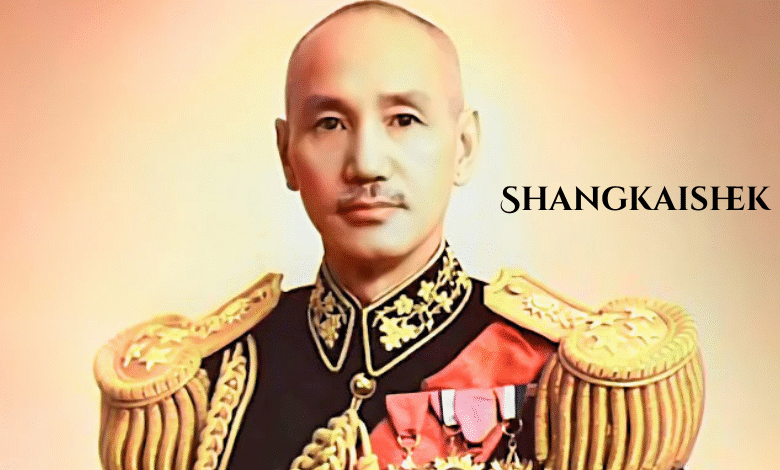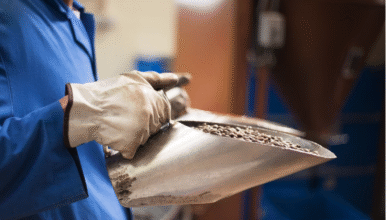Shangkaishek: The Man Who Shaped Modern China and Taiwan

Chiang Kai-shek, sometimes misspelled as “shangkaishek,” was a towering figure in 20th-century Chinese history. As a military leader, politician, and head of the Republic of China (ROC), he left an indelible mark on both mainland China and Taiwan. His life was a rollercoaster of triumphs and setbacks from unifying China under the Nationalist banner to losing the mainland to the Communists and rebuilding a new legacy in Taiwan. Whether you’re digging into Chinese history or curious about Taiwan’s roots, Chiang’s story is a fascinating journey worth exploring.
In this article, we’ll dive deep into Chiang Kai-shek’s life, his rise to power, his role in the Chinese Civil War, and how his legacy still echoes today. Expect detailed insights, engaging anecdotes, and a clear breakdown of his impact all wrapped up in a conversational tone that makes history feel alive.
Who Was Chiang Kai-shek?
Chiang Kai-shek (1887–1975) was a Chinese nationalist leader who shaped the destiny of modern China and Taiwan. Born into a turbulent era, he rose from a modest background to become the head of the Kuomintang (KMT), the Chinese Nationalist Party, and the leader of the Republic of China. His career spanned decades of war, revolution, and political upheaval, making him a central figure in some of Asia’s most defining moments.
Chiang’s story isn’t just about battles and politics it’s about a man who dreamed of a unified China but faced endless challenges, from warlords to Japanese invaders to Mao Zedong’s Communist forces. His leadership took him from the mainland’s grand cities to Taiwan’s shores, where he spent his final years. Today, his name sparks debate: Was he a visionary patriot or a flawed dictator? Let’s find out.
Early Life: From Humble Beginnings to Revolutionary
Childhood and Education
Chiang Kai-shek entered the world on October 31, 1887, in Xikou, a quiet town in Zhejiang Province, China. His early years weren’t easy his father, a salt merchant, died when Chiang was just eight, leaving the family in financial strain. Raised by his mother, a devout Buddhist, young Chiang grew up with a mix of discipline and determination that would define his later years.
As a teenager, he showed an interest in military life, a path that wasn’t common for kids from his rural village. He studied at local schools before setting his sights on something bigger: a military education abroad. This ambition would soon take him across the sea to Japan, where his journey truly began.
Military Training in Japan
In 1906, at the age of 19, Chiang packed his bags and headed to Japan to attend the Tokyo Shinbu Gakko, a military preparatory school. Japan was a hub for Chinese revolutionaries at the time, and Chiang didn’t just learn how to march or shoot he soaked up ideas of nationalism and reform. It was here that he crossed paths with members of the Tongmenghui, a revolutionary group led by Sun Yat-sen, the future father of modern China.
Chiang returned to China in 1911, just as the Qing Dynasty crumbled and the Xinhai Revolution kicked off. He threw himself into the fight, serving as a soldier and proving his grit. His time in Japan had lit a spark, and his connection with Sun Yat-sen would soon propel him into the heart of China’s nationalist movement.
Rise to Power: Leading the Kuomintang
The Northern Expedition
By the 1920s, China was a mess of warring factions and regional warlords. Chiang saw an opportunity to change that. After Sun Yat-sen’s death in 1925, he stepped up as a key leader in the Kuomintang and launched the Northern Expedition (1926–1928). This bold campaign aimed to unify China by taking down the warlords and bringing the country under KMT control.
With a mix of military strategy and Soviet support, Chiang’s forces swept through southern and central China. Cities like Shanghai and Nanjing fell into KMT hands, and by 1928, Chiang declared victory. It wasn’t a total unification pockets of resistance lingered but it was a massive step toward his dream of a strong, centralized China.
Building the Nanjing Government
With the Northern Expedition’s success, Chiang set up shop in Nanjing, establishing it as the capital of the Republic of China in 1928. The next decade, often called the “Nanjing Decade,” was a time of progress and struggle. Chiang pushed for modernization roads, railways, and schools popped up but his government wasn’t exactly a democracy. He ruled with an iron fist, cracking down on dissent and keeping power tightly in KMT hands.
This period also saw the seeds of conflict with the Chinese Communist Party (CCP). In 1927, Chiang turned on his former allies, launching a violent purge that killed thousands of communists. It was a brutal move that set the stage for a decades-long rivalry with Mao Zedong and the CCP.
The Chinese Civil War: A Nation Divided
Clashing with the Communists
The Chinese Civil War (1927–1949) was a showdown between Chiang’s KMT and the CCP, with China’s future hanging in the balance. It kicked off with the 1927 purge but paused during the Second Sino-Japanese War (1937–1945), when both sides teamed up to fight Japan. Once the Japanese were out of the picture, though, the gloves came off again.
Chiang had the upper hand at first his forces controlled the cities, and he had U.S. backing. But the CCP, led by Mao, played a smarter game. They won over the rural masses with land reforms and hit KMT troops with guerrilla attacks. Slowly but surely, the tide turned.
Major Turning Points
The civil war had some game-changing moments:
-
The Long March (1934–1935): Before the full war resumed, the CCP’s retreat from KMT forces turned Mao into a legend and kept the communist dream alive.
-
The Liaoshen Campaign (1948): The CCP took Manchuria, a huge blow to Chiang’s northern defenses.
-
The Huaihai Campaign (1948–1949): A massive battle that saw the CCP crush KMT forces, paving the way for their takeover of the mainland.
-
The Pingjin Campaign (1948–1949): Beijing and Tianjin fell, signaling the end was near for Chiang’s mainland rule.
Chiang’s army was plagued by corruption, low morale, and poor planning. Meanwhile, the CCP’s unity and grassroots support proved unbeatable.
The Retreat to Taiwan
By 1949, the writing was on the wall. The CCP declared the People’s Republic of China (PRC), and Chiang had no choice but to flee. He took about two million followers soldiers, officials, and civilians and set up the ROC government in Taiwan. From Taipei, he vowed to retake the mainland, but that dream never came true.
Taiwan became Chiang’s new battleground, not for war but for survival. He turned the island into a stronghold, determined to prove the ROC could thrive even in exile.
Life in Taiwan: A New Chapter
Governing the Island
In Taiwan, Chiang hit the reset button. He took over as president of the ROC in 1950 and got to work rebuilding. Land reforms gave farmers a stake in the game, and infrastructure projects laid the groundwork for growth. But it wasn’t all rosy Chiang declared martial law, turning Taiwan into a one-party state under the KMT.
The “White Terror” era saw thousands jailed or killed for suspected communist ties. It was a dark side of Chiang’s rule, one that still stirs debate in Taiwan today.
Economic Boom and Authoritarian Rule
Despite the repression, Taiwan’s economy took off. By the 1960s and 70s, it was an industrial powerhouse, earning a spot among Asia’s “Four Tigers.” Chiang’s policies export-driven growth, U.S. aid, and tight control fueled this transformation.
Yet, his grip on power never loosened. Elections were limited, and dissent was crushed. Chiang died in 1975, leaving behind a prosperous but tightly controlled Taiwan a legacy his son, Chiang Ching-kuo, would eventually soften by paving the way for democracy.
Legacy: Hero or Villain?
Chiang’s Impact on China
In mainland China, Chiang’s legacy is a mixed bag. The CCP paints him as the loser who couldn’t stop Mao’s rise, and his role often gets overshadowed by communist victories. But dig deeper, and you’ll see his mark: he fought Japan tooth and nail during World War II, keeping China in the game when surrender seemed likely.
Historians also credit him with early modernization efforts during the Nanjing Decade. Still, his failure to unite China and root out corruption in the KMT sealed his mainland fate.
Chiang’s Influence on Taiwan
In Taiwan, Chiang’s a bigger deal. He’s the guy who kept the ROC alive, turning a small island into an economic miracle. Statues of him dot the landscape, and Taipei’s Chiang Kai-shek Memorial Hall is a testament to his enduring presence. But not everyone’s a fan some see him as a dictator whose heavy hand delayed democracy.
Globally, Chiang’s remembered as a Cold War player, a staunch anti-communist who kept the U.S. close. His life reflects the chaos and ambition of his time, making him a figure worth studying.
Tables
Timeline of Chiang Kai-shek’s Life
|
Year |
Event |
|---|---|
| 1887 |
Born in Xikou, Zhejiang Province |
| 1906 |
Studies military tactics in Japan |
| 1923 |
Heads Whampoa Military Academy |
| 1926 |
Leads the Northern Expedition |
| 1928 |
Establishes Nanjing as ROC capital |
| 1949 |
Retreats to Taiwan after civil war |
| 1950 |
Becomes president of ROC in Taiwan |
| 1975 |
Dies in Taipei at age 87 |
Key Battles of the Chinese Civil War
|
Battle |
Year |
Outcome |
|---|---|---|
|
Liaoshen Campaign |
1948 |
CCP captures Manchuria |
|
Huaihai Campaign |
1948–1949 |
CCP defeats KMT, takes mainland |
|
Pingjin Campaign |
1948–1949 |
CCP secures Beijing and Tianjin |
FAQ: Common Questions About Chiang Kai-shek
What did Chiang Kai-shek do for China?
He led the Northern Expedition to unify China, fought Japan in World War II, and headed the ROC government until 1949, when he lost to the Communists and moved to Taiwan.
Why did Chiang Kai-shek lose the Chinese Civil War?
Corruption in the KMT, poor military strategy, and the CCP’s strong rural support and tactics outmatched him, leading to his defeat by 1949.
How did Chiang Kai-shek transform Taiwan?
He turned Taiwan into an economic powerhouse with land reforms and industrialization, though his authoritarian rule limited freedoms until after his death.
What is Chiang Kai-shek’s legacy today?
In Taiwan, he’s seen as a founder of modern prosperity; in China, he’s a historical footnote overshadowed by Mao. His global role as an anti-communist leader also stands out.
Conclusion
Chiang Kai-shek’s life was a wild ride through war, power, and exile. From his early days in Zhejiang to his final years in Taipei, he chased a vision of a unified China that slipped through his fingers but not before leaving a lasting imprint on Taiwan and beyond. His story is a blend of grit, controversy, and resilience, offering lessons in leadership and the cost of ambition.
Whether you see him as a hero who stood against the odds or a leader who couldn’t adapt, Chiang Kai-shek’s place in history is secure. His journey shaped two nations and countless lives, making him a name worth remembering.



